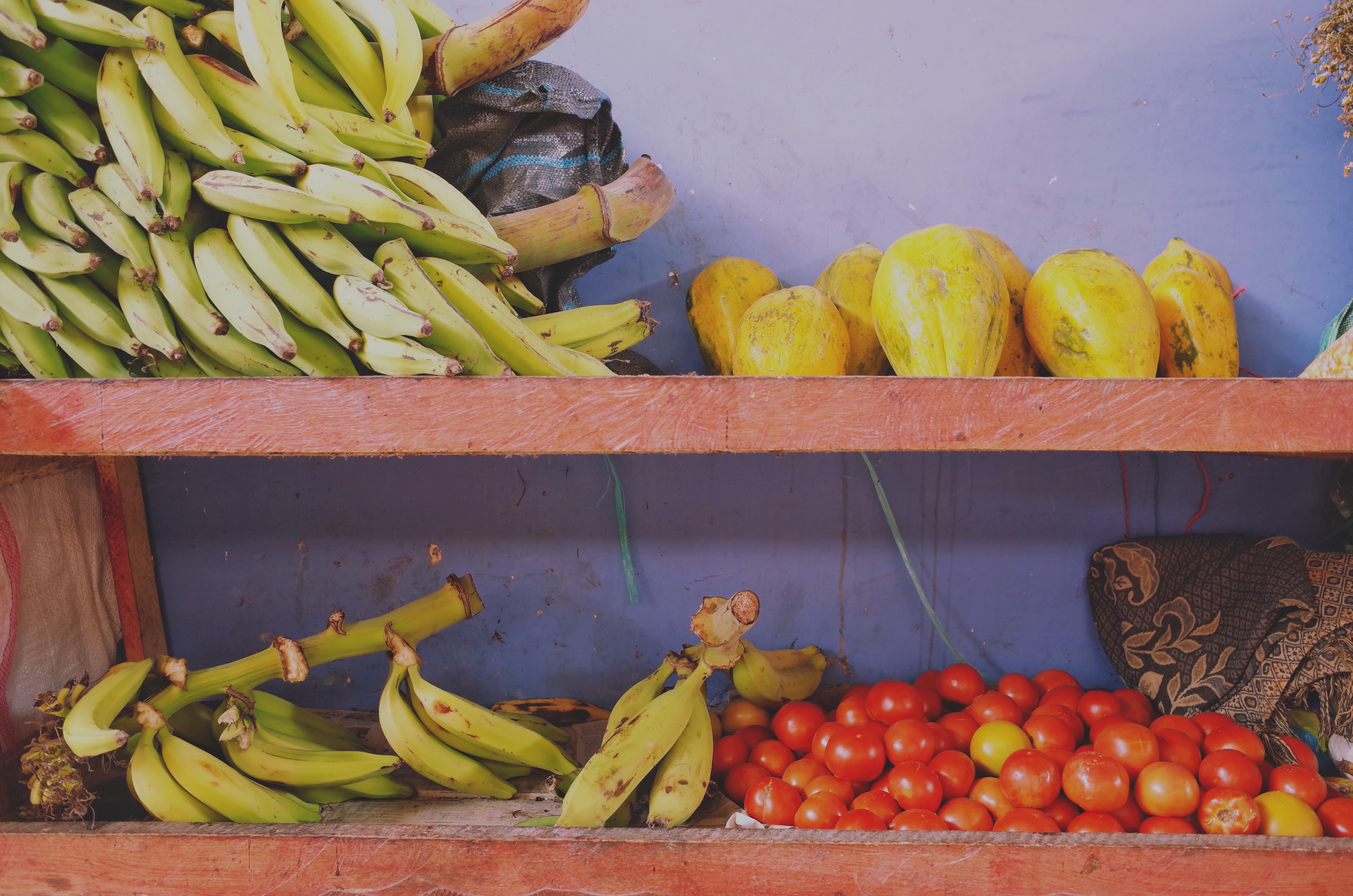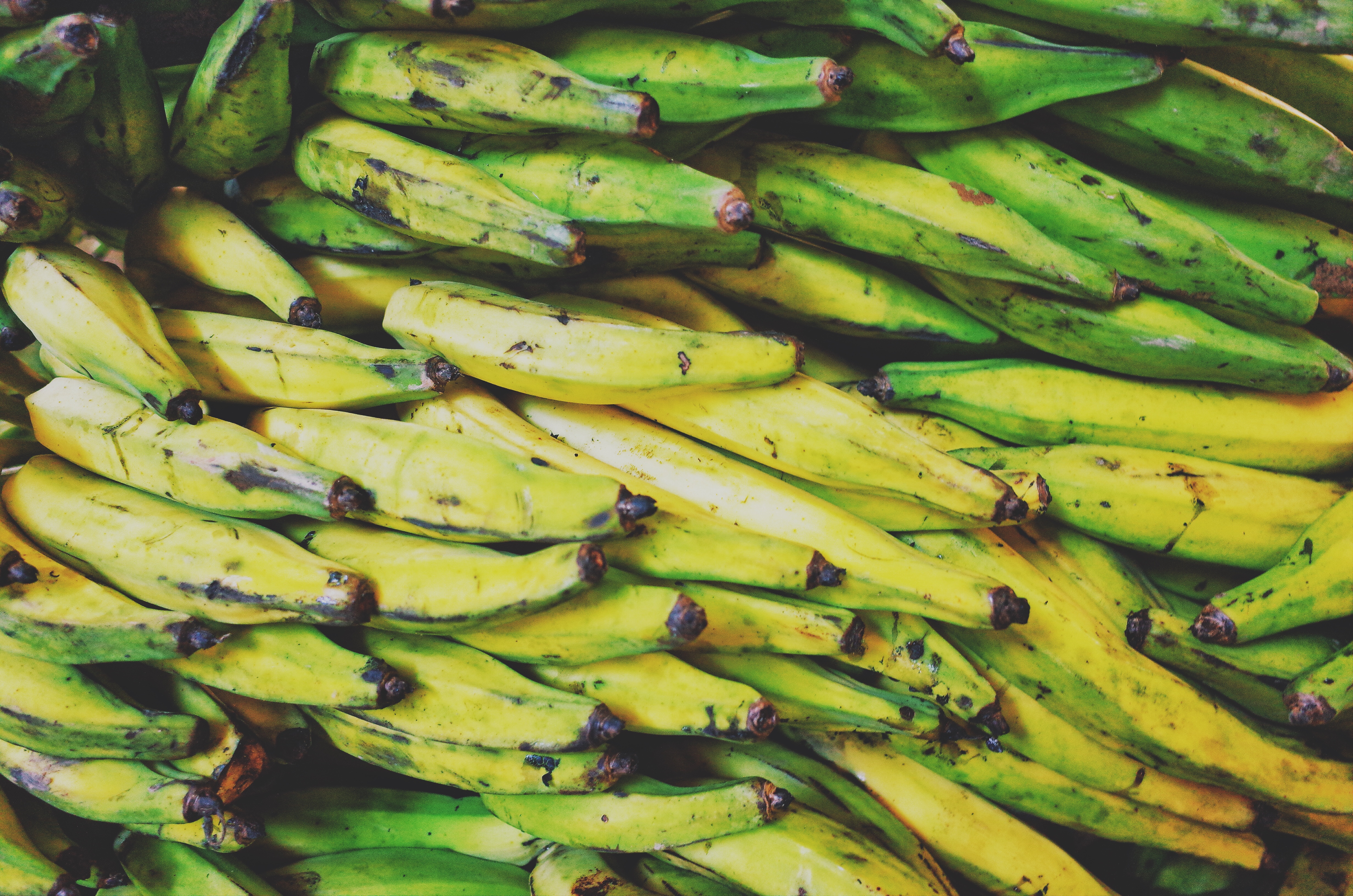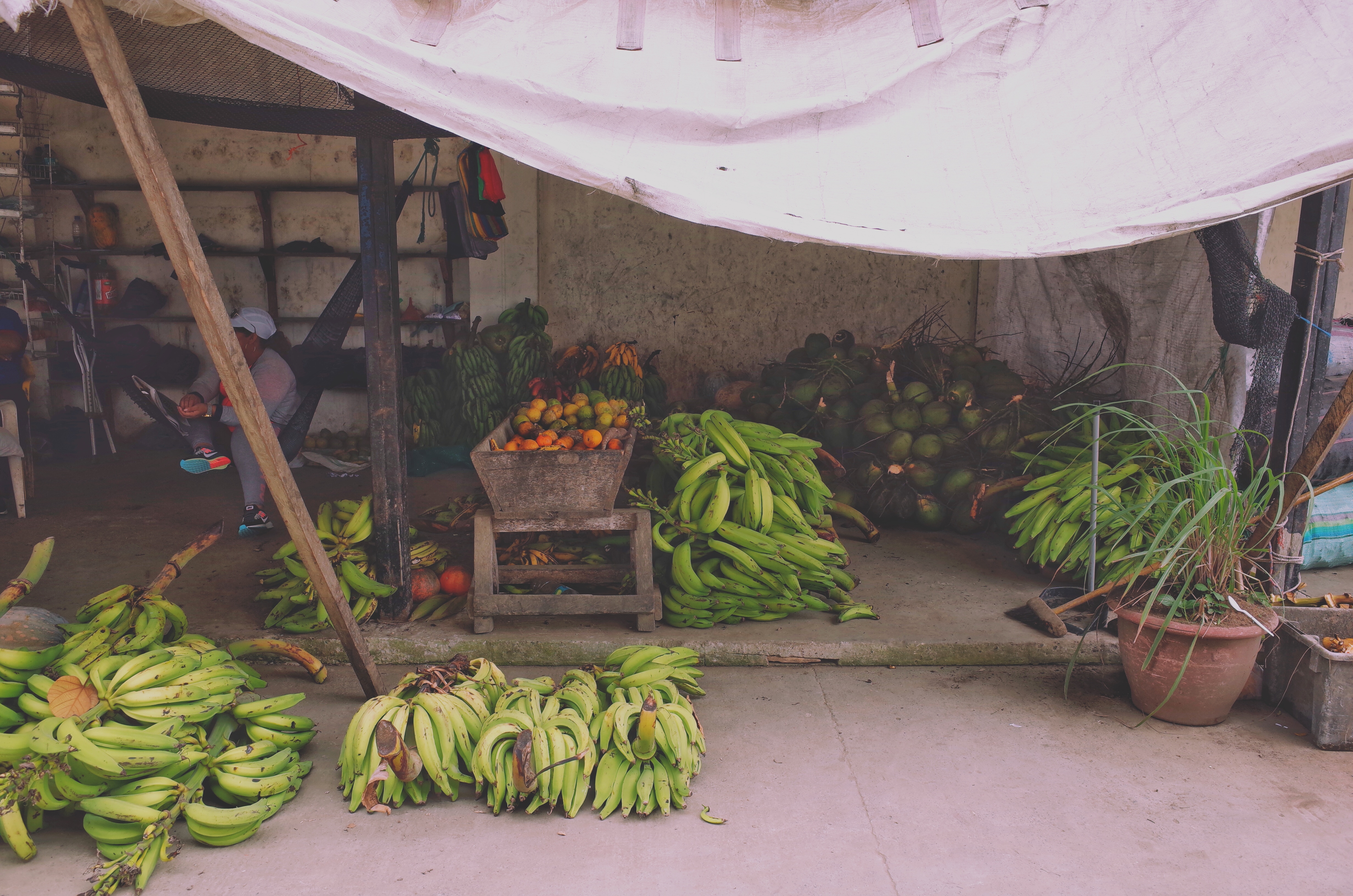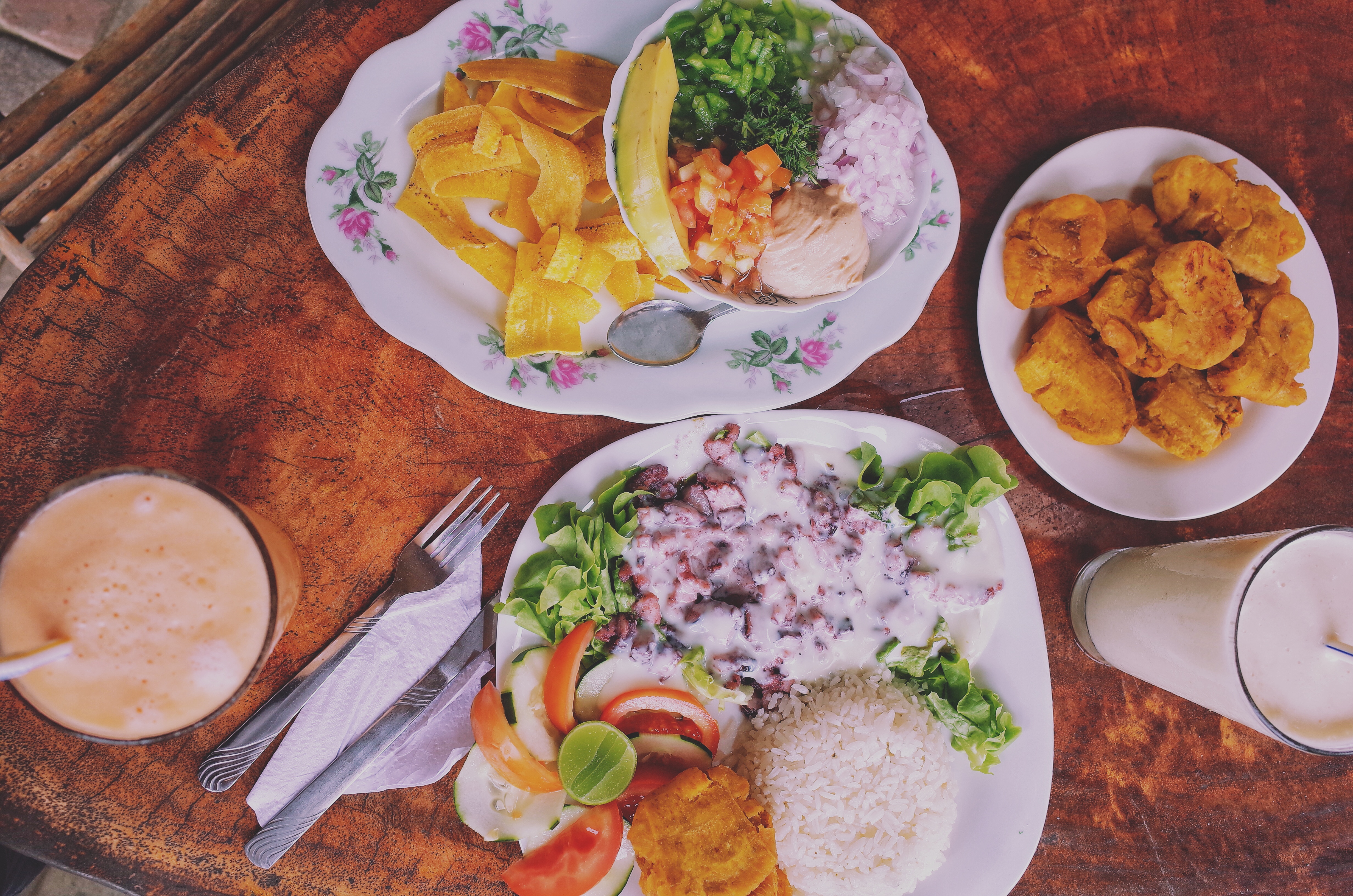
Growing up in a multicultural family in the heart of London it was tough to understand the layers of cultural heritage that my family represent. Food however was our haven, our safe space to enjoy all the things that linked us to traditions of the past. It was always there to teach, remind and gently conjure up connections to a people and place I felt so far removed from.
My mum would prepare the cuisine of her Jewish childhood and the delectable smell of freshly made latkes (potato cakes) with applesauce and sour cream, would fill the house on an auspicious occasion once a year. On other occasions, we would enjoy food of my dad’s family, from the Caribbean. At Christmastime, as well as the normal offerings there was always rice and beans cooked in coconut milk. But what I most looked forward to was the holy grail of foods, the golden, crispy and sweet treat: the humble plantain.
“If I was out buying hair products, my mum would ask me to pick up a couple of plantains because that was also where the shops clustered”
In 90s London plantain was uncommon. Like any foodstuff outside the norm, you had to know where to get it. Everyone had their place to go to procure the essential component of a Caribbean meal. We had two frequent shops that lined dilapidated shopping streets around North London. In Queen’s Crescent, Dalston Market and on Stroud Green road, walking into these rarefied little shops to select the finest ingredients was an experience in itself. The dusty shelves were filled with hot pepper sauce, dried saltfish and yams. If I was out buying hair products, my mum would ask me to pick up a couple of plantains because that was also where the shops clustered. They were simply not stocked in the local corner shop or supermarket.

“Plantain at university was a way to bring much-needed home comforts into my halls of residence on freezing winter nights”
Plantain at university was a way to bring much-needed home comforts into my halls of residence on freezing winter nights. As I explored the displacement of the Caribbean migrant from a literary perspective, I looked for ways to feel more myself. I discovered I could order them online as part of my grocery shop, something that my mum would never have been able to do years before.
The supermarkets were catching on to the “diaspora pound”. Foods aimed directly at the diversity of the British population began popping up in mainstream shops. My yearned-for plantains would arrive so green and unripe, it would be at least a week before I could fully enjoy the sweet caramel unctuousness that frying a ripe one produces. What I didn’t know then, and would learn on my travels, is that you can cook plantain in all stages of ripeness from raw, to green to totally black.
“The plantain provided a surprising source of relief. As a vegetarian I could always rely on it to bail me out”
Fast forward to 2017. I had quit my 9-5 to travel around South America. Wandering for months through Chile, Bolivia, Peru and Ecuador so far from my London home, I craved for something to comfort me. I wanted familiarities, when everything around me was strange. Adrift in a land knowing nobody and at times barely understanding anything of its people and their customs, the plantain provided a surprising source of relief. As a vegetarian I could always rely on it to bail me out. Plantain chips are sold absolutely everywhere! Known as Chifles, in the same way that you can get packets of crisps in the UK, they are the go-to snack in Latin America.

On the coast of Ecuador in a restaurant surrounded by diners tucking into the local fish delicacy, I opted for Patacones. These are a delightful splat of crispy deep-fried plantain. I duly discovered that Ecuadorians live for plantain and have a plethora of dishes to reflect this. Bolones de Verde is a yellow ball of cheese, mashed plantain and sometimes meat sold in street food carts countrywide. Emborrajados are sweet plantain delicacy from the capital Quito. These people were suddenly speaking my language! I felt more at home than I had in eight months.
“Boiled, fried, mashed, grilled or pureed into soup, it pops up in innumerable guises in world cuisine”
If once “exotic” foods like avocado, sweet potato, pineapple and mango can become part of the British everyday diet, why not plantain? The versatility of this unassuming foodstuff cannot be underestimated. Boiled, fried, mashed, grilled or pureed into soup, it pops up in innumerable guises in world cuisine. From Indian breakfast plantain in Kerala, to spiced as a Ghanaian snack and mixed with black beans to form a Guatemalan dessert.

“Like it’s more famous cousin the banana, plantain grows all year round. So it represents an essential income for farmers and is a crucial source of nutrition for many millions”
Cultivated around the world in lush temperate equatorial zones from Central America to the Caribbean, from Africa to parts of Asia such as Malaysia and the Philippines, the plantain is an integral part of diets. Like it’s more famous cousin the banana, plantain grows all year round. So it represents an essential income for farmers and is a crucial source of nutrition for many millions of people, helping to lift producers and consumers alike out of food poverty.
As part of a complex and widening diaspora, each time I eat plantain I am invoking more than just a full belly. For me it is a way of living and breathing the sustenance of my ancestors. This was something that I didn’t grasp until I went to places where this food is a fundamental part of the food culture. It will continue to remind me of why I travel, why I love where I come from and how I can stay connected to my history.








